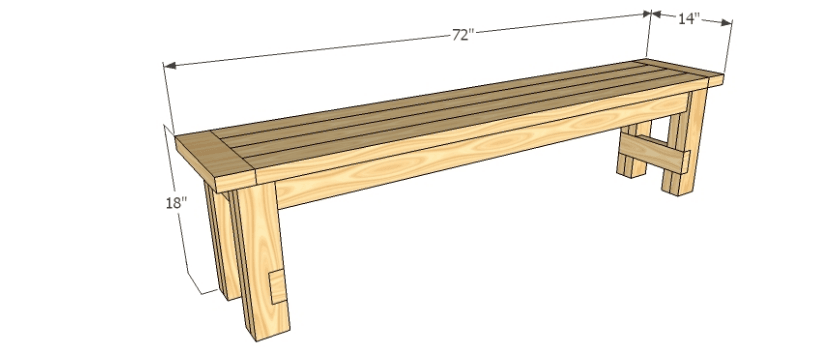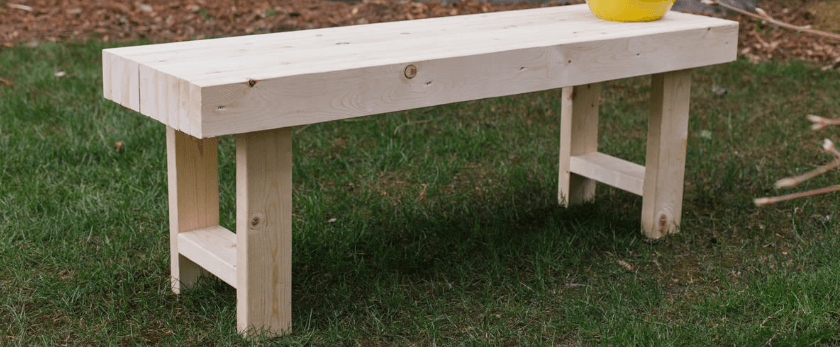As we become more aware of the impact our actions have on the environment, many of us are looking for ways to reduce our carbon footprint and live a more sustainable lifestyle. One simple and effective way to do this is by making our own furniture, such as benches, instead of buying them from stores. Not only does this save money, but it also helps to reduce waste and promote a more eco-friendly way of living.
In this article, we will discuss the negative effects of store-bought benches on the environment, the benefits of making your own, and provide a step-by-step guide on how to make your own homemade bench. So, let's get started!
Why Store-Bought Benches are Bad for the Environment
-
Deforestation: The production of wooden benches contributes to deforestation, which is a major cause of climate change. Trees are essential for absorbing carbon dioxide and producing oxygen, and cutting them down for furniture production disrupts this natural process.
-
Carbon Emissions: The transportation of store-bought benches from factories to stores and then to our homes emits a significant amount of carbon dioxide into the atmosphere. This contributes to air pollution and further exacerbates the effects of climate change.
-
Chemicals and Toxins: Many store-bought benches are made with synthetic materials that release harmful chemicals and toxins into the environment. These chemicals can pollute the air, water, and soil, and have negative impacts on human health and wildlife.
-
Landfill Waste: When store-bought benches break or are no longer needed, they often end up in landfills where they take up valuable space and release harmful substances into the environment as they decompose. This adds to the growing problem of waste management and pollution.
Why Making Your Own Bench is Better for the Environment
-
Sustainable Materials: By making your own bench, you have control over the materials used. You can choose sustainable options such as reclaimed wood, bamboo, or recycled plastic. These materials are eco-friendly and reduce the demand for new resources.
-
Reduced Carbon Footprint: Making your own bench eliminates the need for transportation, reducing the carbon emissions associated with store-bought furniture. This small change can make a big impact in reducing your carbon footprint.
-
Customizable and Durable: Homemade benches can be customized to fit your specific needs and preferences. This means you can make a bench that will last for years to come, reducing the need for frequent replacements and further reducing waste.
-
Promotes Creativity and Resourcefulness: Making your own bench allows you to tap into your creativity and resourcefulness. You can repurpose old materials or use items that would otherwise end up in the landfill. This not only reduces waste but also saves money.
What You Will Need
- Wood (reclaimed, bamboo, or recycled plastic)
- Saw
- Drill
- Screws
- Measuring tape
- Sandpaper
- Paint or stain (optional)
- Paintbrush (optional)
- Protective gear (gloves, goggles, mask)

Step-by-Step Guide to Making Your Own Bench
-
Measure and Cut the Wood: Using a measuring tape, determine the desired length and width of your bench. Then, using a saw, cut the wood to the appropriate size. You will need two pieces for the legs and several pieces for the seat and backrest.
-
Drill Holes: Using a drill, make holes in the legs and seat pieces where they will be attached. This will ensure a secure and sturdy bench.
-
Assemble the Legs: Take the two leg pieces and attach them together using screws. This will create the base of your bench.
-
Attach the Seat and Backrest: Place the seat and backrest pieces on top of the legs and use screws to attach them. Make sure they are evenly spaced and secure.
-
Sand and Finish: Use sandpaper to smooth out any rough edges and give your bench a polished look. You can also paint or stain your bench to protect it from the elements and add a personal touch.
-
Enjoy Your Homemade Bench: Your bench is now ready to use! Place it in your garden, on your porch, or in your home and enjoy the satisfaction of knowing you made it yourself.
Responsible Disposal of Old Benches
If you have old store-bought benches that you no longer need, it is important to dispose of them responsibly. Here are a few options:
- Donate: If your bench is still in good condition, consider donating it to a local charity or thrift store. This will give it a new life and prevent it from ending up in a landfill.
- Repurpose: Get creative and repurpose your old bench into something new. You can use the wood for other DIY projects or turn it into a planter or bookshelf.
- Recycle: If your bench is made of recyclable materials, such as plastic or metal, make sure to recycle it properly. Contact your local recycling center for more information on how to do this.
Conclusion
Making your own bench is a simple and effective way to reduce your impact on the environment. By using sustainable materials and reducing waste, you can contribute to a greener, more eco-friendly future. So, the next time you need a bench, consider making your own instead of buying one from the store. Your wallet and the planet will thank you.










